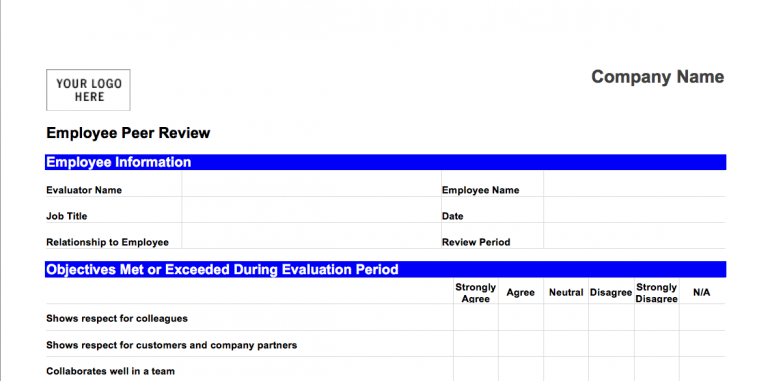Effective Ways To Improve Work Performance

Identify the Problem
Sometimes the employee may be oblivious theres actually an issue with his or her work performance. Their intentions may be in the right place. They may just need a bit of guidance. So, shedding light on the actual issue. Confront your employee privately. Keep in mind, bringing issues into the open isn’t about simply complaining. Be prepared to discuss the problems and provide solutions and recommendations. Your employee should leave the encounter with a full understanding on their problematic areas and how correct the issues.

For example, say an employee often missing work deadlines. You might begin with by complimenting the employee on the high quality of work consistently submitted. Starting with a compliment shows you appreciate the work your employee has been doing. Next you’ll address the situation. “I noticed you’ve been missing quite a few deadlines lately. Share with me what’s going on.” Once you understand the situation, look for solutions. You’ll end the encounter with another compliment. “By the way, Client X was really happy with XYZ. Keep up the good work.” Compliments are always better when they’re specific and detailed.
Be Open to Discussion

Another benefit allowing open discussion is you offer the employee an opportunity to be involved in the solution. Before you offer suggestions, your employee may already know how to resolve the situation. Instead of the conversation ending with your dictate… do or else, the employee can not only own the problem but also the resolution. They become accountable to their own decisions.
Individualize Incentives

On the other hand, an employee who leans toward the introverted side may feel awkward receiving public praise. Singling him/her out can be a stressful experience. That doesn’t mean an introvert doesn’t appreciate recognition. Consider this example instead: “Customer X asked if we knew anything about XYZ. I mentioned that research report you drew up last year and passed it along. Customer X said it was exactly what she was looking for.”
Establish Goals
I’ve talked quite a few times about goal setting and evaluations. So, I’m not going to go too deep into goal setting. What I will say is to document the goals, so you can reflect on them at a later date. Reflection will include both acknowledging successful completion of goals and goals not accomplished. Just like you should make S.M.A.R.T. goals for your company, the goals for your employees should also Specific, Measurable, Attainable, Relevant, and Time Bound.
Cutting Your Losses

Final Thoughts
Running a business in itself is challenging. Adding employees to the mix present a different set of challenges. I like to think of employees as one of the valuable resources a company has. However, the wrong employees on your team can easily become a liability and even bring your company to ruin. It’s up to you, as the owner, to guide your employees so that they reach their potential within your company.
What techniques do you use to help improve work performance?[fusion_separator style_type=”shadow” hide_on_mobile=”small-visibility,medium-visibility,large-visibility” class=”” id=”” sep_color=”” top_margin=”” bottom_margin=”” border_size=”” icon=”” icon_circle=”” icon_circle_color=”” width=”” alignment=”center”][/fusion_separator]








Hi Renee. I would like to say that your post about effective ways to improve work performance is quite informative. Though I am not a brick-and-mortar business owner, I can relate to what you would recommend that business owners can do to establish a good working environment filled with positivity.
I once had a boss that practiced micromanaging on me. Well, not only me but many other people that was in my situation. It was a trucking company where I worked a dispatching position. Whenever there were problems of any kind, the boss would just belittle us in front of his peers which led to me being let go from the position. Once that happened, there was a “domino-effect” another employee got fired, then another, then another. After about a month, the company got shut down.
You must be right that businesses owners must be able to communicate. In my situation, the boss just didn’t want to hear it. It must must be that we follow his way or it’s the highway.
You have done a good job, and keep up the good work.
Armand
Thank you, Armand. I think some people are natural leaders. However, that doesn’t mean they’re great leaders. 🙂 I think those most successful at leadership are those that realize that they don’t know everything and are willing to learn and listen. They take their newly acquired knowledge and guide others to success.
Hi Renee,
very interesting article!
I personally think, that you can improve not your performance, but the performance of the whole business you work in by good communication.
There can go so many things wrong when communicating… It starts all in a misunderstanding and often ends in a dispute. And you loose much time, when there are misunderstandings.
It’s better taking ten minutes more to communicate and be sure that the other person understood you than having problems afterwards.
Good article!
I agree, Sirio! Misunderstandings can be a huge source of conflict. I think it’s human nature, in many cases, to assume we understand what the other person is talking about. Along with that, we have a tendency to want to be heard, which can lead to failing to listen. Even worse, we can end up interrupting repeatedly, never really taking the time to understand the other viewpoint. Yes, we want to be understood, but we also need to strive to understand.
Awesome Articles regarding this , and I do believe this on what you write here is true :). I not a Business Owner yet, but I do understand the conceptual ideal of Leading, and always they say the first way to overcome an obstacles would be finding the problem of the issue 🙂
Somehow Smart Goal caught my eye. I read the articles, and it really interesting on how to create a solid Plan in accomplishing anything.
Great Articles, I really did enjoy reading it content. But there one thing I have to disagree regarding cutting looses. Sometimes there are people who join the wrong department believing it is their strength. Example he is working in Account but his strength is in Sales. Shouldn’t the HR give an opportunity to him to try sales out?
Thanks for stopping by, Gilberttks. You asked about cutting losses and working with employees’ strengths/weaknesses. I’m not sure where I heard this. I believe at a leadership presentation. “Leaders need to make sure they have the right people in the right seats on the bus.” I think this is where your accounting person comes into play. It sounds like he’s on the wrong seat.
I have a couple of different thoughts on your accounting guy. 1) He applied for the position and was given the opportunity. If sales was his strength and not accounting, shouldn’t he have applied for a sale’s position instead? 2) If he is a good fit for the company, perhaps the company would like to coordinate a position in another department. However, the company isn’t obligated to give him another shot, particularly if he didn’t do well with the opportunity provided him.
Many times employees receive multiple opportunities to improve their work performance. It’s a tough decision letting an employee go. Not as hard as for the employees being terminated, but still tough. However, some employees don’t work out.